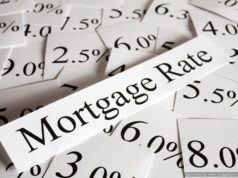
What is GDP?
Gross Domestic Product, or GDP, is the market value of all final services and goods that are produced within a country in a specific period. The GDP looks the market value to arrive at a value which is then used to examine the growth rate of the economy as well as the overall economic health of the country being looked at. As a measure of the economy, the GDP can be a very useful way to measure the economy.
GDP can be measured using three different techniques. Theoretically, all three of these techniques should result in the same number.
Income measure: The total value or amount of income that is mostly generated in terms of wages and profits.
Output measure: The total value of the services and goods produced by all different sectors of the economy such as construction, agriculture, service sector, government, manufacturing, and energy.
Expenditure measure: The value of the services and goods purchased by government, households, buildings, and investment in machinery as well as the value of exports subtracted by the imports
When a GDP of a country is calculated, the value includes all government and private spending, services and goods produced, as well as exports. The GDP is then adjusted for inflation and imports to arrive at a value which is believed to reflect the total sum of the country’s services and goods accurately. The GDP may be shown as a bulk number, but it is typically converted into a value representing GDP per capita, which creates a number that reflects the average per citizen. A high value for per capita GDP is associated with the country having overall improvements in the standards of living.
One major advantage of the GDP is that since it is computed in a very standardized and clear manner, it is simple to compare previous GDP values to judge the health and strength of the economy. Economists are also able to convert GDP values from different nations to compare the economies of the two countries with each other. The key goal with GDP is to quantify and show that a country’s economy has improved since the previous year. Many nations issue more than one GDP estimate in the year to give people a rough idea of just how well the economies is doing.
One of the major problems with the GDP is that the value does not account for other gray and black markets. While this issue may not seem like a major one, some countries have extremely trafficked black markets which may actually represent a significant portion of the GDP. The GDP value also fails to account for the distribution of wealth of the country, with GDP per capita value hiding economic disparities that may exist. For example, the United States has a very high GDP per capita, but a large disparity between the poorest and wealthiest Americans.
GDP values also do not account for the quality of the services and goods produced, or the reason for why they were produced. An example of this is how a country recovering from a national disaster may spend a large amount of money making repairs, which increases the GDP, but the disaster is not necessarily linked to the country’s economic growth.
































